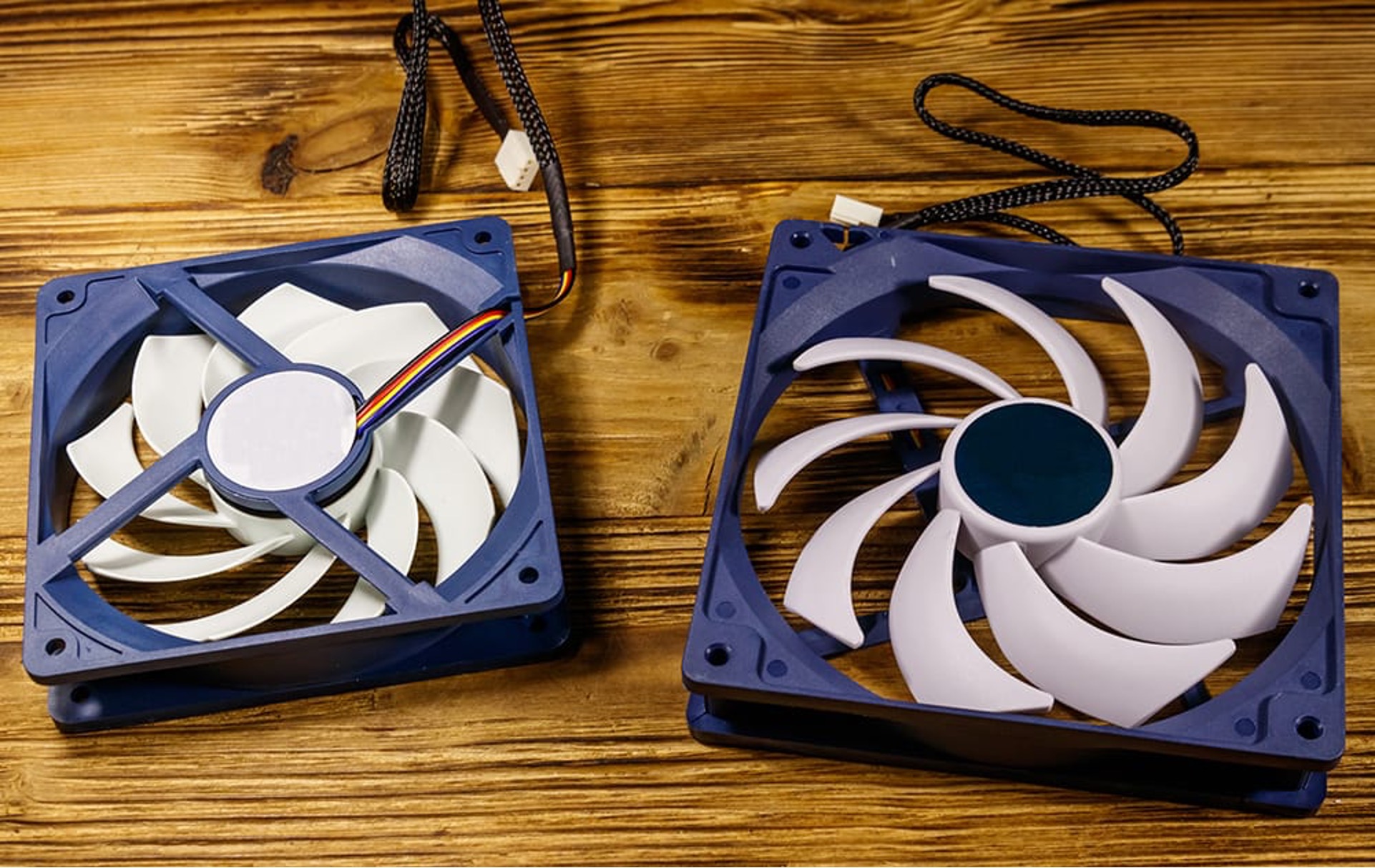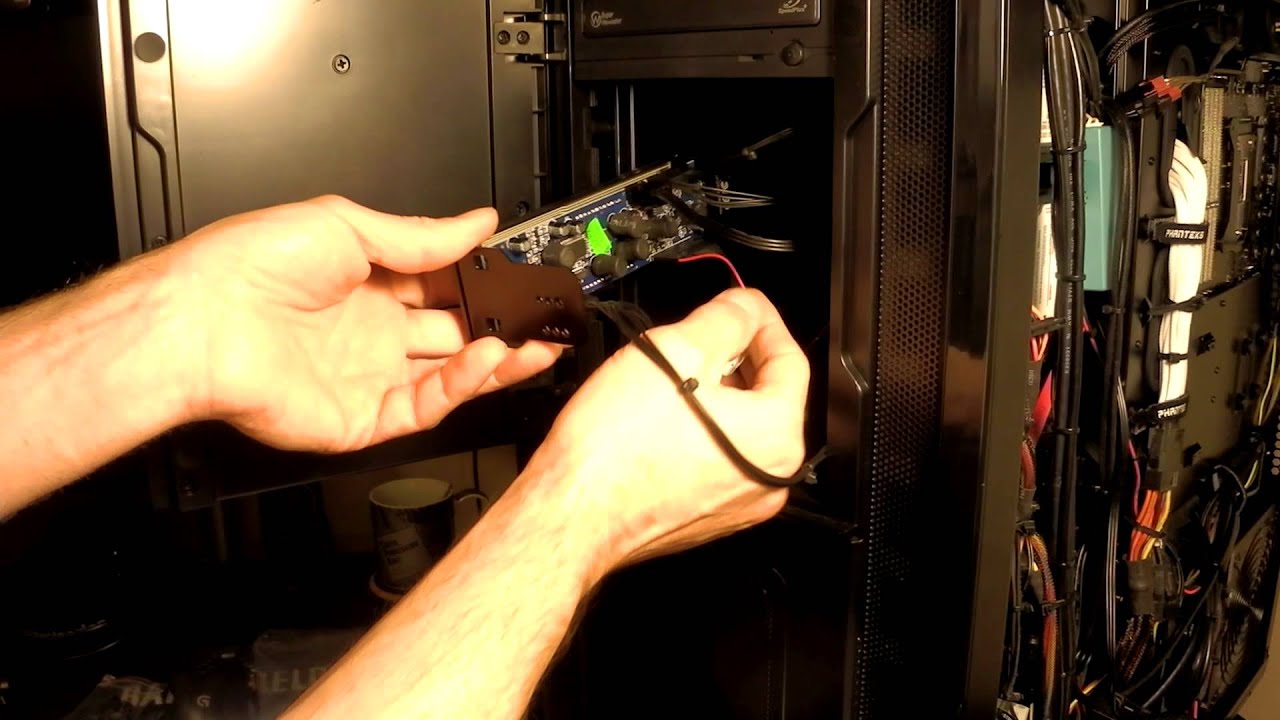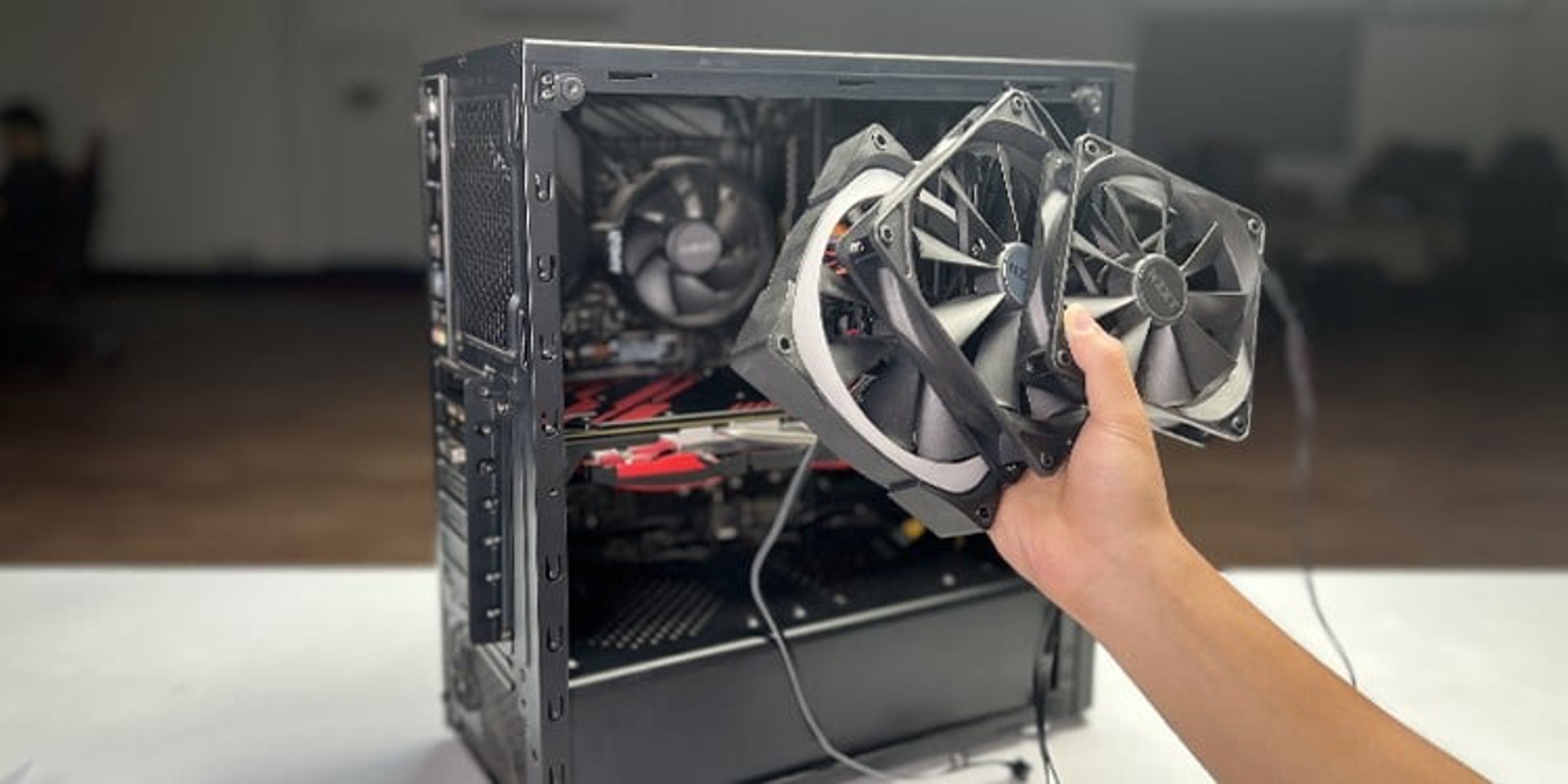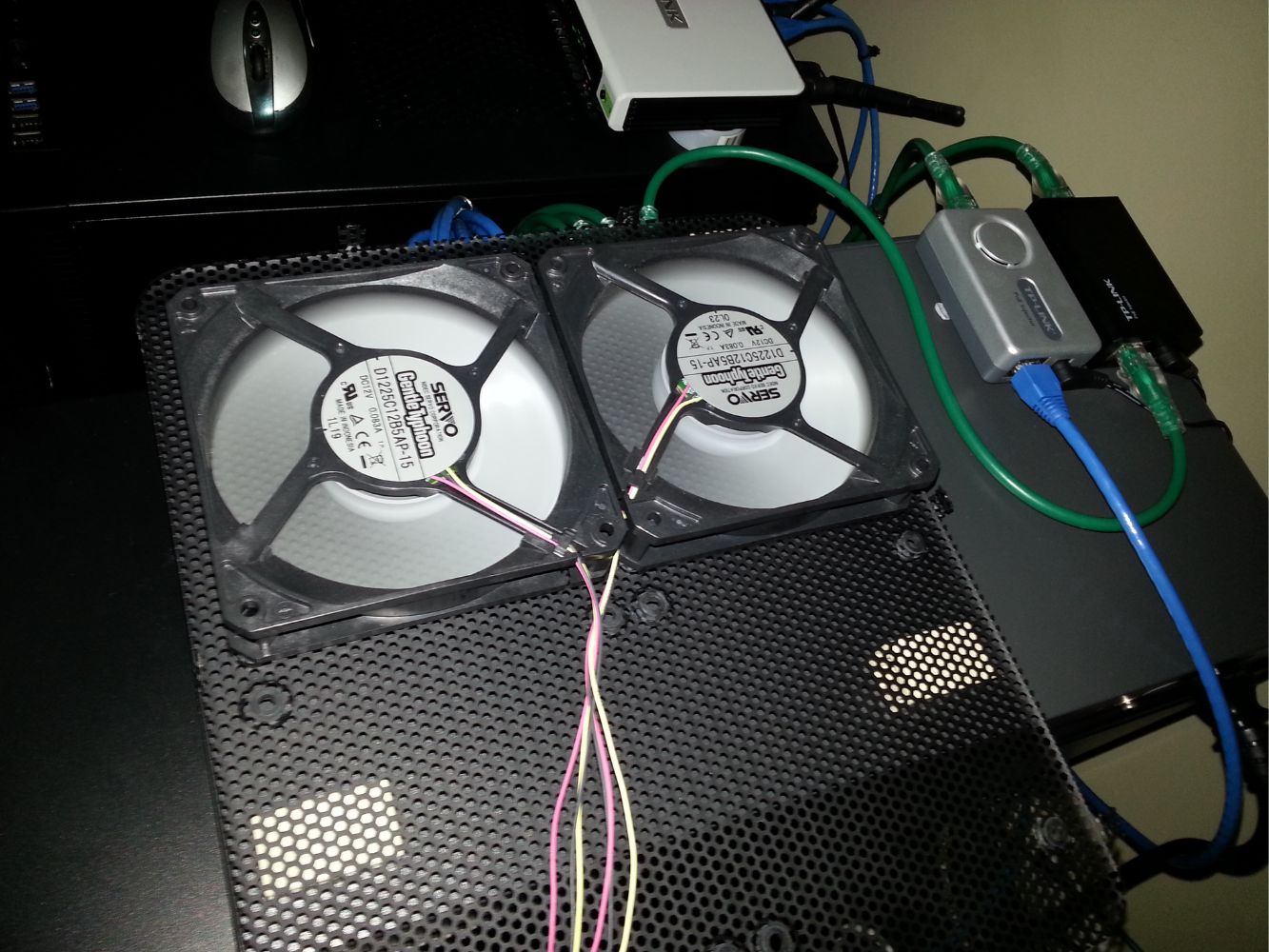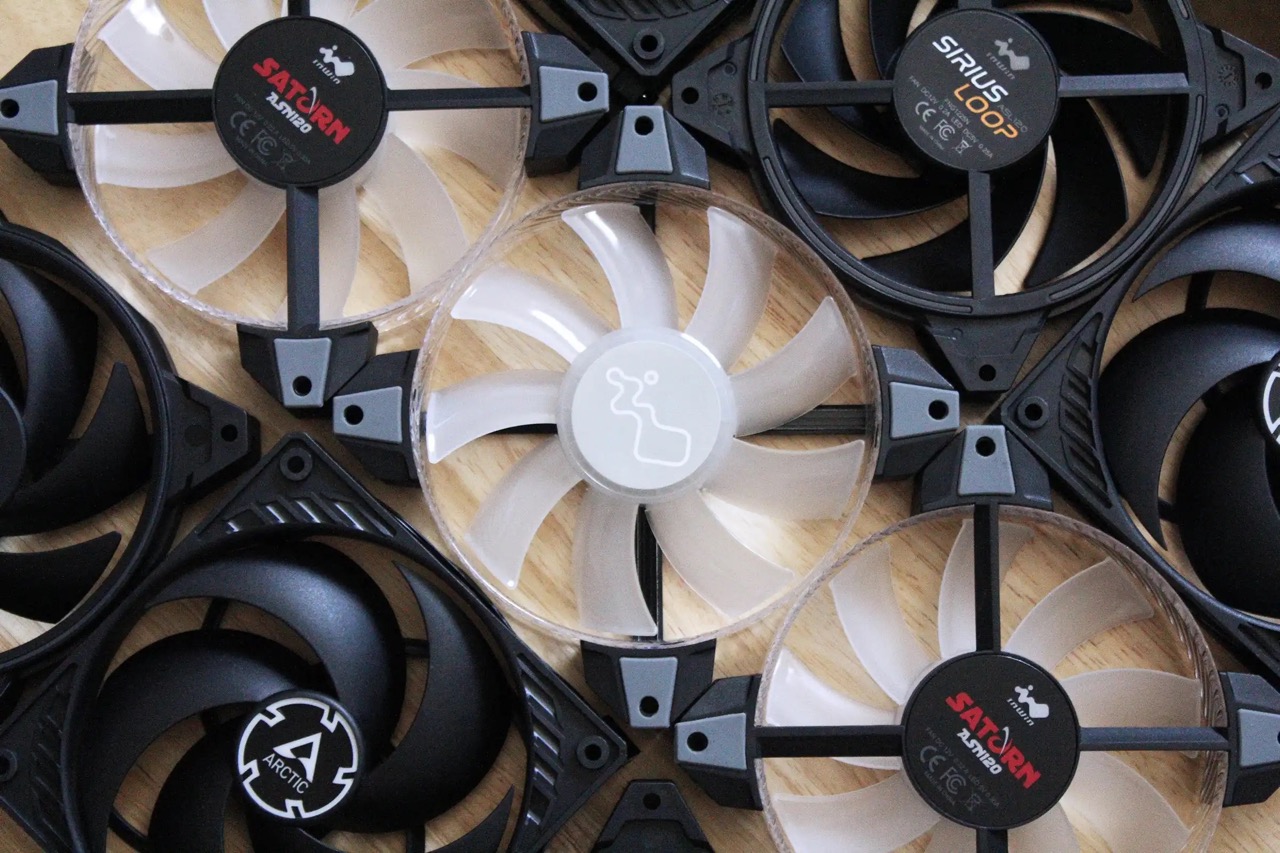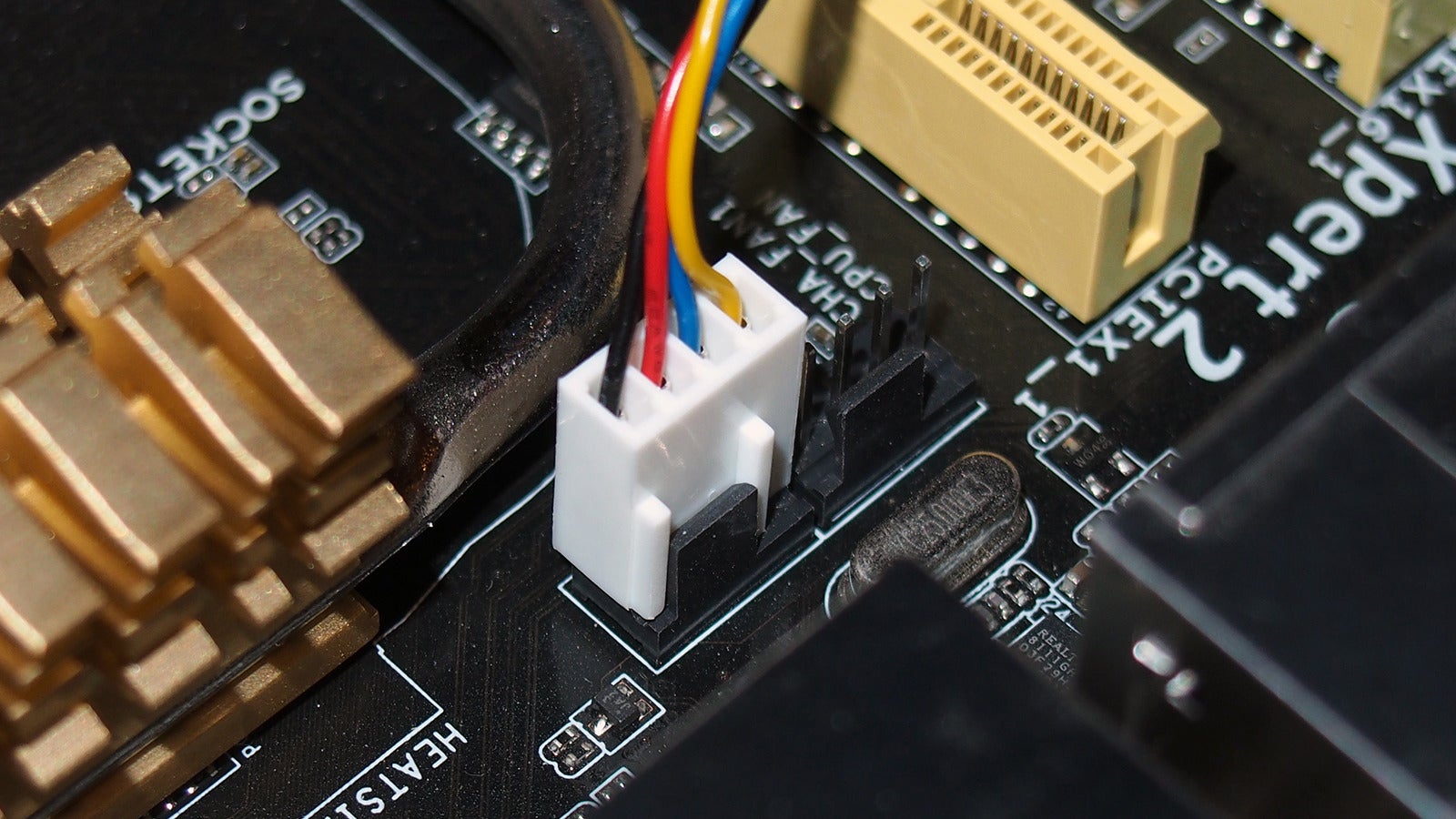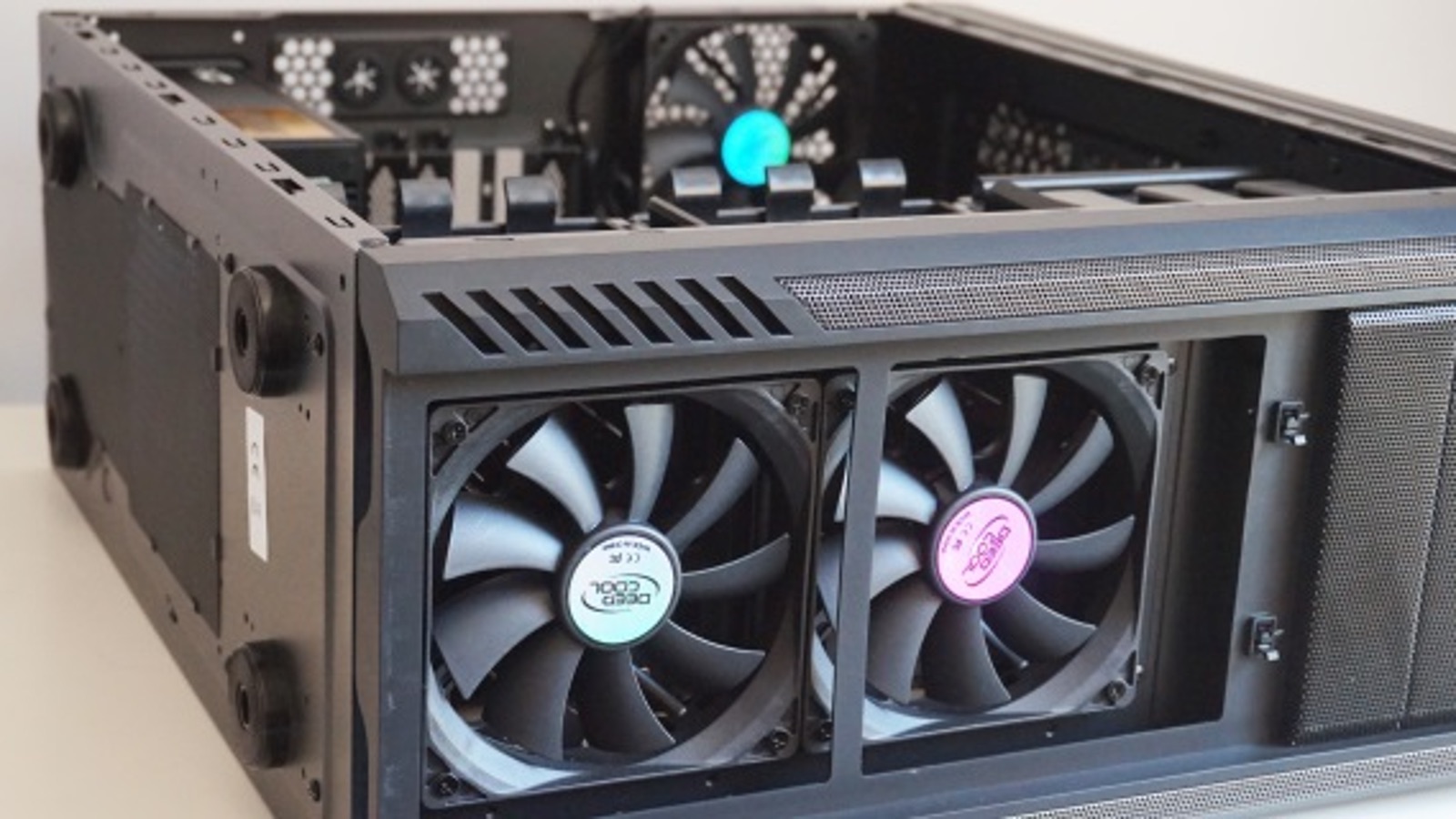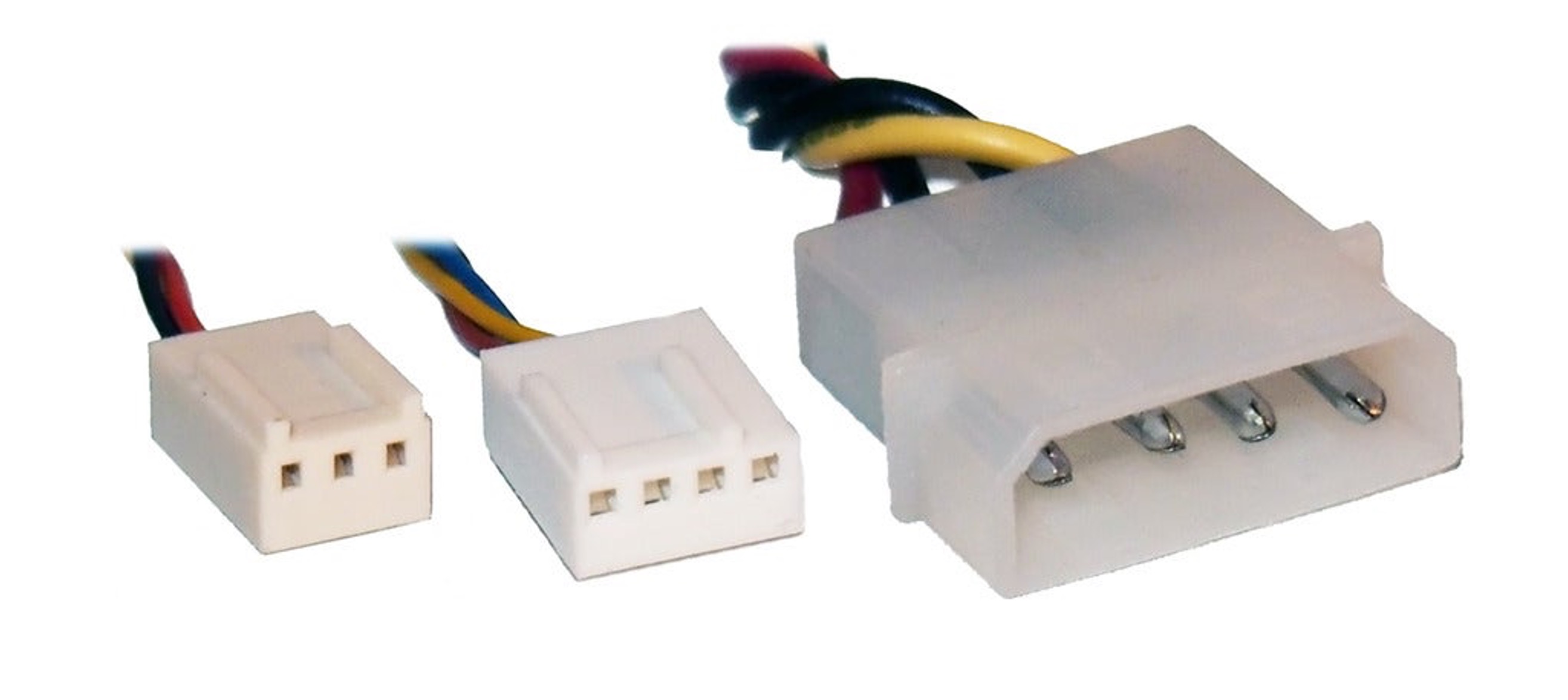Introduction
A case fan controller is an essential component for regulating the speed and performance of the case fans in a computer system. These controllers are designed to enhance cooling efficiency, minimize noise levels, and prolong the lifespan of the computer components. By adjusting the fan speed, users can maintain optimal temperatures and prevent overheating issues.
Case fans play a crucial role in expelling hot air and bringing in cool air into the computer case. Without proper control, the fans may spin at maximum speed all the time, resulting in unnecessary noise and increased power consumption. This is where case fan controllers come in handy.
There are two major types of case fan controllers: manual fan controllers and software fan controllers. Manual fan controllers are hardware devices that offer manual control over fan speeds, while software fan controllers are programs that allow users to monitor and adjust fan speeds through a user-friendly graphical interface.
In this article, we will explore how case fan controllers work, the different types available, and the benefits they offer. Whether you are a casual computer user or a hardcore gamer, understanding the functionality and advantages of case fan controllers will help you make informed decisions when it comes to optimizing your computer’s cooling system.
Types of Case Fan Controllers
When it comes to case fan controllers, there are two main types to choose from: manual fan controllers and software fan controllers. Each type has its own set of features and benefits, catering to different user preferences and requirements.
1. Manual Fan Controllers: Manual fan controllers are hardware devices that are installed inside the computer case. They typically come in the form of a control panel with knobs or buttons that allow users to adjust the fan speeds manually. These controllers provide a physical and tactile interface for customizing the cooling performance of the system.
One of the advantages of manual fan controllers is their simplicity and reliability. Since they are not software-dependent, they do not require any installation or configuration. Users can simply connect the fans to the controller, adjust the knobs or press the buttons, and instantly control the fan speeds according to their preferences.
Moreover, manual fan controllers often come with additional features such as temperature monitoring, which allows users to keep track of the temperatures inside the computer case. This information can help users make more informed decisions when adjusting the fan speeds to optimize cooling efficiency.
2. Software Fan Controllers: Software fan controllers, as the name suggests, are programs that are installed on the computer system. They provide a graphical user interface (GUI) that allows users to monitor and adjust the fan speeds digitally.
One of the key advantages of software fan controllers is their flexibility and customization options. Users can access a wide range of settings and parameters to fine-tune the fan speeds, including creating custom fan curves based on temperature thresholds. Software fan controllers also often come with additional features such as fan profiling, fan grouping, and even RGB lighting control.
Furthermore, software fan controllers allow for real-time monitoring of fan speeds, temperatures, and other system information. Users can easily analyze and optimize the cooling performance of their system by keeping a close eye on these variables.
Both manual and software fan controllers have their own strengths and weaknesses. The choice between the two depends on factors such as personal preference, system requirements, and desired level of control and customization. Regardless of the type chosen, a case fan controller is a valuable tool for ensuring efficient cooling and minimizing noise levels in a computer system.
Manual Fan Controllers
Manual fan controllers are hardware devices that provide users with direct control over the speed and performance of their case fans. These controllers are typically installed inside the computer case and offer a physical interface for adjusting fan speeds.
One of the main advantages of manual fan controllers is their simplicity and ease of use. They do not rely on software or complex configurations, making them accessible to all users. Manual fan controllers often feature knobs or buttons that allow users to manually adjust the fan speeds according to their preferences. By turning the knobs or pressing the buttons, users can increase or decrease the speed of the fans, providing immediate control over cooling performance.
In addition to speed control, many manual fan controllers also come with extra features such as temperature monitoring. Some models are equipped with sensors that can measure the temperature inside the computer case. This information is displayed on the controller itself, allowing users to keep track of the system’s temperature and make adjustments accordingly.
Manual fan controllers are known for their reliability and durability. Since they do not rely on software or require updates, they are less prone to glitches and compatibility issues. Moreover, manual fan controllers are not affected by system crashes or reboots, ensuring continuous fan control even in adverse situations.
Another advantage of manual fan controllers is their versatility. They can be used with any type of cooling fans, including case fans, CPU fans, and even liquid cooling fans. This flexibility allows users to customize their entire cooling system and achieve the desired balance between cooling performance and noise levels.
On the downside, manual fan controllers may have limited control options, depending on the model. Some controllers only offer basic speed adjustment, while others may lack advanced features such as fan profiling or fan grouping. Additionally, manual fan controllers require physical access to the computer case for adjustments, which can be inconvenient for users who prefer to control their fans through software interfaces.
Despite these limitations, manual fan controllers remain a popular choice among computer enthusiasts and gamers due to their simplicity, reliability, and immediate control over fan speeds. They provide an effective and straightforward solution for managing the cooling performance of a computer system.
Software Fan Controllers
Software fan controllers are programs that allow users to monitor and control their case fans through a graphical user interface (GUI) on their computer. These controllers provide more advanced features and customization options compared to manual fan controllers.
One of the main advantages of software fan controllers is their flexibility and control options. Users can access a wide range of settings and parameters to fine-tune the speed and performance of their case fans. This includes creating custom fan curves based on temperature thresholds, allowing for dynamic control of fan speeds based on the system’s needs.
Software fan controllers also offer real-time monitoring of fan speeds, temperatures, and other system information. Users can easily keep track of the cooling performance of their system and make adjustments accordingly. Some software controllers even provide visual representations, such as graphs or charts, to help users visualize the data and understand how their fan speeds affect the system’s temperatures.
In addition to fan speed control, software fan controllers often come with additional features such as fan profiling. This allows users to create profiles for different usage scenarios, such as gaming or light workload, and switch between them seamlessly. Fan grouping is another useful feature, where users can link multiple fans together and control them as a group, ensuring synchronized performance and reducing noise levels.
Another advantage of software fan controllers is their compatibility with various cooling systems. They can be used with different types of fans, including case fans, CPU fans, and liquid cooling fans, making them suitable for a wide range of computer setups. Additionally, software fan controllers can integrate with other software programs, such as hardware monitoring tools or RGB lighting control software, for a unified and streamlined user experience.
However, it’s important to note that software fan controllers require installation and configuration, and may require regular updates to ensure compatibility and optimal performance. This reliance on software means that the controllers may be affected by system crashes, updates, or even malware. Additionally, software-based control may introduce a slight delay in adjusting fan speeds compared to manual controllers.
Despite these considerations, software fan controllers provide advanced control and customization options, real-time monitoring, and compatibility with different cooling systems. They offer a comprehensive solution for users who prefer a digital interface to manage and optimize the cooling performance of their computer system.
How Manual Fan Controllers Work
Manual fan controllers work by providing users with direct control over the speed and performance of their case fans. These controllers are hardware devices that are installed inside the computer case and offer a physical interface for adjusting fan speeds.
The first step in using a manual fan controller is installing it in the computer case. These controllers typically come in the form of a control panel with knobs or buttons. They are connected to the fans through cables or headers, allowing for direct communication with the fans.
Once the manual fan controller is installed, users can adjust the fan speeds manually by simply turning the knobs or pressing the buttons. This physical interface allows for immediate and precise control over fan speeds. By increasing or decreasing the speed, users can regulate the airflow inside the computer case and keep the system cool.
Some manual fan controllers also come with additional features, such as temperature monitoring. These controllers are equipped with temperature sensors that measure the temperature inside the computer case. The information is displayed on the control panel, allowing users to keep track of the system’s temperature and make adjustments as needed.
When adjusting the fan speeds, it’s important to find the right balance between cooling performance and noise levels. Increasing the fan speed can improve cooling efficiency but may also result in increased noise. Conversely, decreasing the fan speed can reduce noise but may impact cooling performance.
Manual fan controllers provide users with the flexibility to customize their cooling system according to their preferences and requirements. They can fine-tune the fan speeds based on the system’s workload, ambient temperature, or personal comfort level.
One of the advantages of manual fan controllers is their reliability and durability. They do not rely on software or complex configurations, making them less prone to glitches or compatibility issues. Even if the computer system crashes or reboots, the manual fan controller will continue to provide fan control, ensuring the system remains cool.
Overall, manual fan controllers offer a simple and effective solution for managing the speed and performance of case fans. They provide users with direct control, immediate adjustments, and additional features such as temperature monitoring. Whether you’re a casual computer user or an enthusiast, a manual fan controller can help you optimize the cooling performance of your computer system.
How Software Fan Controllers Work
Software fan controllers are programs that allow users to monitor and control the speed and performance of their case fans through a graphical user interface (GUI) on their computer. These controllers provide advanced features and customization options compared to manual fan controllers.
Software fan controllers work by communicating with the hardware components of the computer system, specifically the fan headers or controllers. They access the fan speeds and other system information through the computer’s motherboard or dedicated fan controllers.
Once installed and launched on the computer, software fan controllers provide users with a user-friendly interface to monitor and adjust fan speeds. Users can typically access a range of settings and parameters to fine-tune the cooling performance of their system.
The main function of software fan controllers is to provide fan speed control. Users can manually set the desired fan speeds or create custom fan curves based on temperature thresholds. These temperature thresholds are usually configurable, allowing users to define specific temperature ranges and corresponding fan speeds.
Furthermore, software fan controllers often offer real-time monitoring of fan speeds, temperatures, and other system parameters. Users can keep track of the cooling performance of their system through visual representations such as graphs or charts. This information helps users understand the impact of their adjustments and optimize their cooling strategy accordingly.
Some software fan controllers also provide additional features such as fan profiling. This allows users to create different profiles or presets for various usage scenarios. For example, users can create a gaming profile with higher fan speeds and a silent profile for everyday tasks. The ability to switch between these profiles with a click or automatically based on system usage is a convenient feature of software fan controllers.
Software fan controllers can also offer fan grouping capabilities. With fan grouping, users can link multiple fans together and control them as a group. This feature ensures synchronization of fan speeds and performance, which is particularly useful in setup scenarios where fans are placed in different parts of the computer case.
It’s important to note that software fan controllers require proper installation and configuration on the computer system. They may also require periodic updates to ensure compatibility and optimal performance. Since they rely on software, software fan controllers may be affected by system crashes, updates, or even malicious software.
Despite these considerations, software fan controllers provide advanced control and customization options, real-time monitoring, and compatibility with different types of cooling fans. They offer a comprehensive solution for users who prefer a digital interface to manage and optimize the cooling performance of their computer system.
Factors to Consider When Choosing a Case Fan Controller
When choosing a case fan controller, there are several factors to consider to ensure that you select the right one for your specific needs and preferences.
1. Control Interface: Decide whether you prefer a manual fan controller with physical knobs or buttons or a software-based controller with a graphical user interface. Consider which type of interface would be more intuitive and convenient for you to adjust fan speeds.
2. Number of Fan Channels: Determine the number of fan channels you need based on the number of fans you plan to control. Some controllers offer multiple channels, allowing you to control the speed of individual fans separately.
3. Compatibility: Ensure that the fan controller you choose is compatible with your computer’s motherboard and fan connectors. Check the specifications and compatibility information provided by the manufacturer or consult with a knowledgeable expert if needed.
4. Power Output: Consider the power output of the fan controller to ensure that it can provide sufficient power to your fans. High-performance fans may require more power, so make sure the controller can handle the power requirements of your specific fans.
5. Control Features: Evaluate the control features offered by the fan controller. Look for features such as temperature monitoring, fan profiling, fan grouping, and customizable fan curves. These features can enhance your ability to fine-tune the cooling performance of your system.
6. Aesthetics and Design: Consider the aesthetics and design of the fan controller, especially if you value an aesthetically pleasing computer setup. Look for a controller that complements the overall look and feel of your computer case.
7. Noise Levels: Take into account the noise levels of the fan controller itself. Look for controllers that are designed to minimize noise interference and vibrations, ensuring a quieter overall computer system.
8. Price and Budget: Set a budget for your case fan controller and consider the price range of different options. Compare the features and quality to make sure you are getting the best value for your money.
9. Reviews and Recommendations: Read reviews and seek recommendations from other users or experts in the field. Their experiences and insights can provide valuable information to help you make an informed decision.
By considering these factors, you can narrow down your options and choose a case fan controller that best suits your needs in terms of control interface, compatibility, power output, control features, aesthetics, noise levels, price, and overall user satisfaction.
Benefits of Using a Case Fan Controller
Using a case fan controller offers several benefits that can greatly enhance the cooling performance and overall experience of your computer system. Here are some key advantages of using a case fan controller:
1. Improved Cooling Efficiency: A case fan controller allows you to manually adjust the fan speeds, enabling you to optimize the airflow and cooling performance inside your computer case. By increasing the fan speeds when the system is under heavy load or during intense gaming sessions, you can effectively dissipate heat and prevent overheating.
2. Reduced Noise Levels: With a case fan controller, you have the flexibility to decrease the fan speeds when running less demanding tasks or when noise reduction is a priority. This can significantly reduce the noise levels produced by the fans, resulting in a quieter and more comfortable computing environment.
3. Customizable Fan Profiles: Many case fan controllers offer the ability to create custom fan profiles. You can set different fan speed settings based on your specific requirements or usage scenarios. For example, you can create a profile for gaming that maximizes cooling performance, and another profile for everyday tasks that focuses on noise reduction.
4. Temperature Monitoring: Some case fan controllers come equipped with temperature sensors that allow you to monitor the temperatures inside your computer case in real-time. This information is useful in determining the effectiveness of your cooling setup and making necessary adjustments to maintain optimal operating temperatures.
5. Precise Control: Manual fan controllers provide precise control over fan speeds. Unlike automatic control systems, you can fine-tune the fan speeds to your desired level, ensuring that the cooling performance aligns perfectly with your requirements and preferences.
6. Extended Lifespan of Components: By effectively managing the temperatures and airflow inside your computer case, a case fan controller helps to prolong the lifespan of your computer components. Overheating can cause damage to sensitive parts such as the CPU and GPU, but with a fan controller, you can ensure a safe and optimal operating environment for your hardware.
7. Versatility and Compatibility: Case fan controllers are compatible with various types of fans, including case fans, CPU fans, and liquid cooling fans. They can be easily integrated into different computer setups, making them a versatile solution for managing cooling performance.
8. Enhances System Performance: By maintaining optimal temperatures, a case fan controller helps to prevent thermal throttling, which can negatively impact the performance of your system. Consistently cool components ensure that your computer can efficiently handle demanding tasks and deliver optimal performance.
9. User-Friendly Interface: Many case fan controllers, especially software-based ones, come with user-friendly interfaces that make it easy to monitor and control fan speeds. This allows novice users to adjust cooling settings effortlessly and provides more experienced users with advanced customization options.
Whether you are a casual computer user or a dedicated gamer, using a case fan controller can greatly enhance the cooling efficiency, noise levels, and lifespan of your computer system. It provides you with the flexibility and control to create a customized cooling setup that perfectly suits your needs and ensures optimal performance.
Conclusion
In conclusion, case fan controllers are essential tools for optimizing the cooling performance of a computer system. Whether you choose a manual fan controller or a software-based controller, both offer benefits that can greatly enhance the overall experience of your computer setup.
Manual fan controllers provide immediate and direct control over fan speeds, allowing you to fine-tune the cooling performance according to your preferences. They are easy to install, reliable, and often come with additional features such as temperature monitoring.
On the other hand, software fan controllers offer more advanced features and customization options. With real-time monitoring, fan profiling, and fan grouping capabilities, you have greater control over your cooling system. Software fan controllers provide flexibility, compatibility, and convenience for users who prefer a digital interface.
When choosing a case fan controller, it is important to consider factors such as the control interface, number of fan channels, compatibility, power output, control features, aesthetics, noise levels, and price. By carefully evaluating these factors, you can select a controller that aligns with your specific needs and preferences.
The benefits of using a case fan controller are numerous. Improved cooling efficiency, reduced noise levels, customizable fan profiles, temperature monitoring, precise control, extended lifespan of components, versatility, compatibility, and enhanced system performance are just some of the advantages that these controllers offer.
Whether you are a casual computer user, a gaming enthusiast, or a professional, investing in a case fan controller is a wise decision. It not only helps maintain optimal temperatures and prevent overheating but also ensures a quieter and more efficient computing experience.
So, take the time to research and choose the right case fan controller for your computer system. With the right controller in place, you can enjoy a cool, quiet, and high-performing computer that can handle any task or gaming session with ease.







